Are you ready to transform your living space and create a unique atmosphere that reflects your personal style? Look no further than an interior design mood board. This powerful tool allows you to communicate your design ideas effectively, whether you're working on your own project or collaborating with an interior design expert.
What is an Interior Design Mood Board?
Think of an interior design mood board as a visual collage that captures your desired look and feel. It combines images, colors, textures, and materials to represent the overall ambiance you want to create. Whether you're designing a cozy living room or a professional office space, a mood board serves as your guiding light throughout the process.
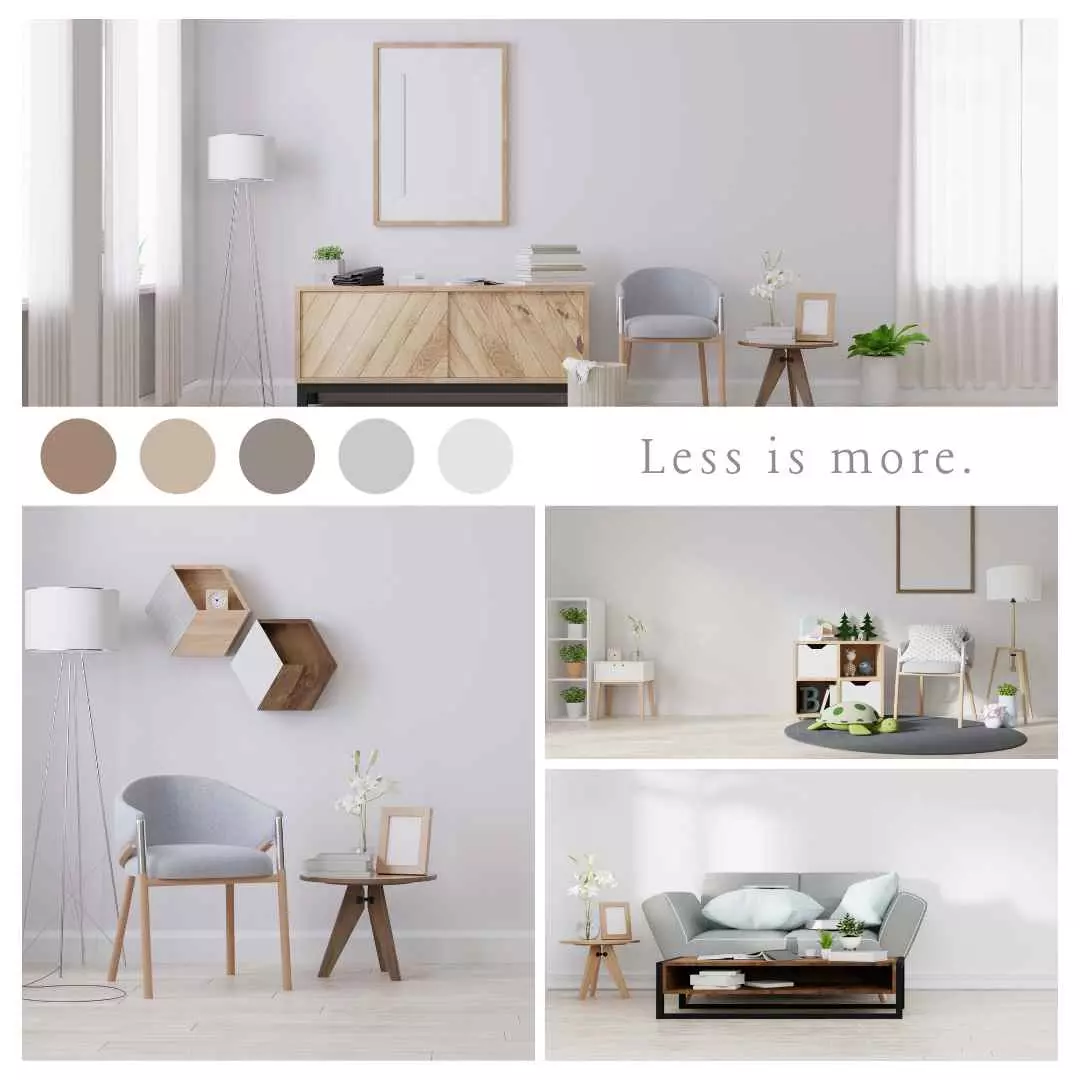 Caption: A stunning example of an interior design mood board.
Caption: A stunning example of an interior design mood board.
Let Your Imagination Run Wild
Creating a mood board is not only practical but also a fun and creative endeavor. Here's what you should include in your interior design mood board:
- Colors: Select a range of colors that resonate with you. Experiment with fabric swatches, paint chips, and photographs to find the perfect palette.
- Images: Find inspiring images that capture the essence of your desired space. Let them guide you in conveying the overall feeling you want to achieve.
- Textures: Incorporate various textures to add depth and interest to your design. Experiment with materials like wood, metal, fabric, and more.
- Patterns: Inject personality into your design by using patterns. Mix and match different prints to create a one-of-a-kind space.
- Furniture: Include images of furniture pieces that you love or would like to incorporate. This will help you visualize how they fit into your overall design.
- Accessories: Finish off your vision with images of accessories that complement your style. From lighting fixtures to decorative elements, these details add the finishing touch.
Remember, less is more when it comes to creating a cohesive and visually appealing mood board.
 Caption: A sophisticated interior design mood board showcasing a grey color palette.
Caption: A sophisticated interior design mood board showcasing a grey color palette.
Three Easy Tools to Create Your Mood Board
If you're eager to make your own interior design mood board, you'll be pleased to know there are user-friendly software options available. Here are three popular tools you can explore:
Canva
Canva is a versatile design tool with an intuitive user interface. With a wide selection of ready-made templates, you can effortlessly create unique mood board layouts in minutes. Add photos, text, and shapes to bring your concept to life.
PicMonkey
PicMonkey offers a collage maker that allows you to create stunning, professional-looking mood boards quickly. You can also enhance your images with filters and effects to personalize your mood board further.
Adobe Photoshop
For advanced users familiar with the software, Adobe Photoshop provides complete control over the look and feel of your mood board. Let your creativity flow and create something truly exceptional.
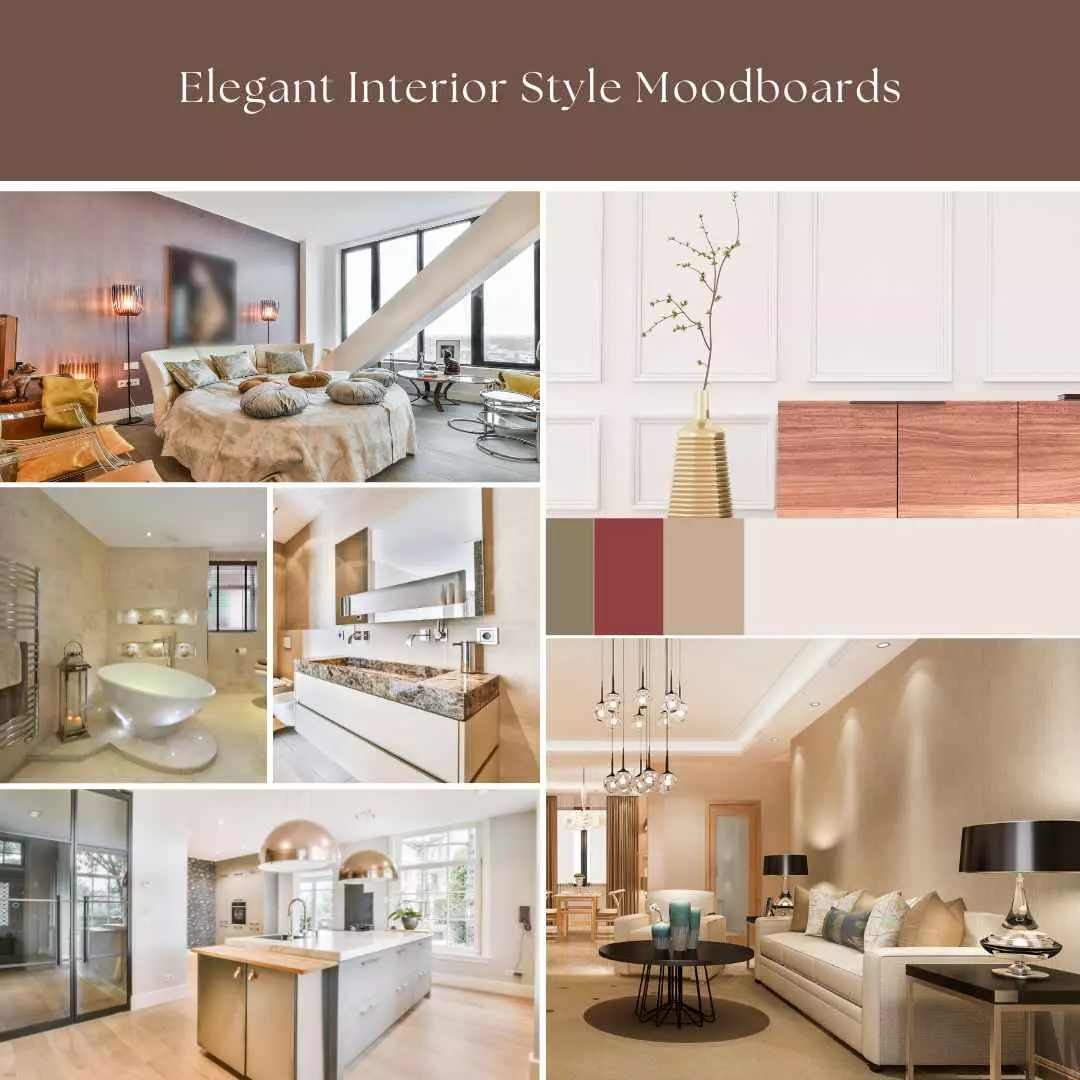 Caption: Let your creativity shine with a mood board featuring a studio color palette.
Caption: Let your creativity shine with a mood board featuring a studio color palette.
Getting Started: Four Simple Steps
Ready to bring your interior design vision to life? Follow these four steps to get started on your mood board journey:
1. Gather Inspiration
Begin by collecting images, fabric swatches, paint samples, and anything else that catches your eye. Pinterest is an excellent source of inspiration, but don't hesitate to tear out pages from magazines or print out images you find online.
2. Sort Your Inspiration
Once you have a collection of inspiring pieces, start categorizing them. This process will help you identify the elements you're most drawn to and narrow down your vision.
3. Create Your Mood Board
There are various ways to create your mood board. For a hands-on approach, consider making a collage on a large piece of poster board. If you prefer a digital format, utilize the online tools mentioned earlier to design your mood board digitally.
4. Use Your Mood Board as a Guide
Once your mood board is complete, it becomes your guiding compass. Refer to it when selecting furniture, decor, and paint for your space. Let it inspire you and help you bring your vision to life.
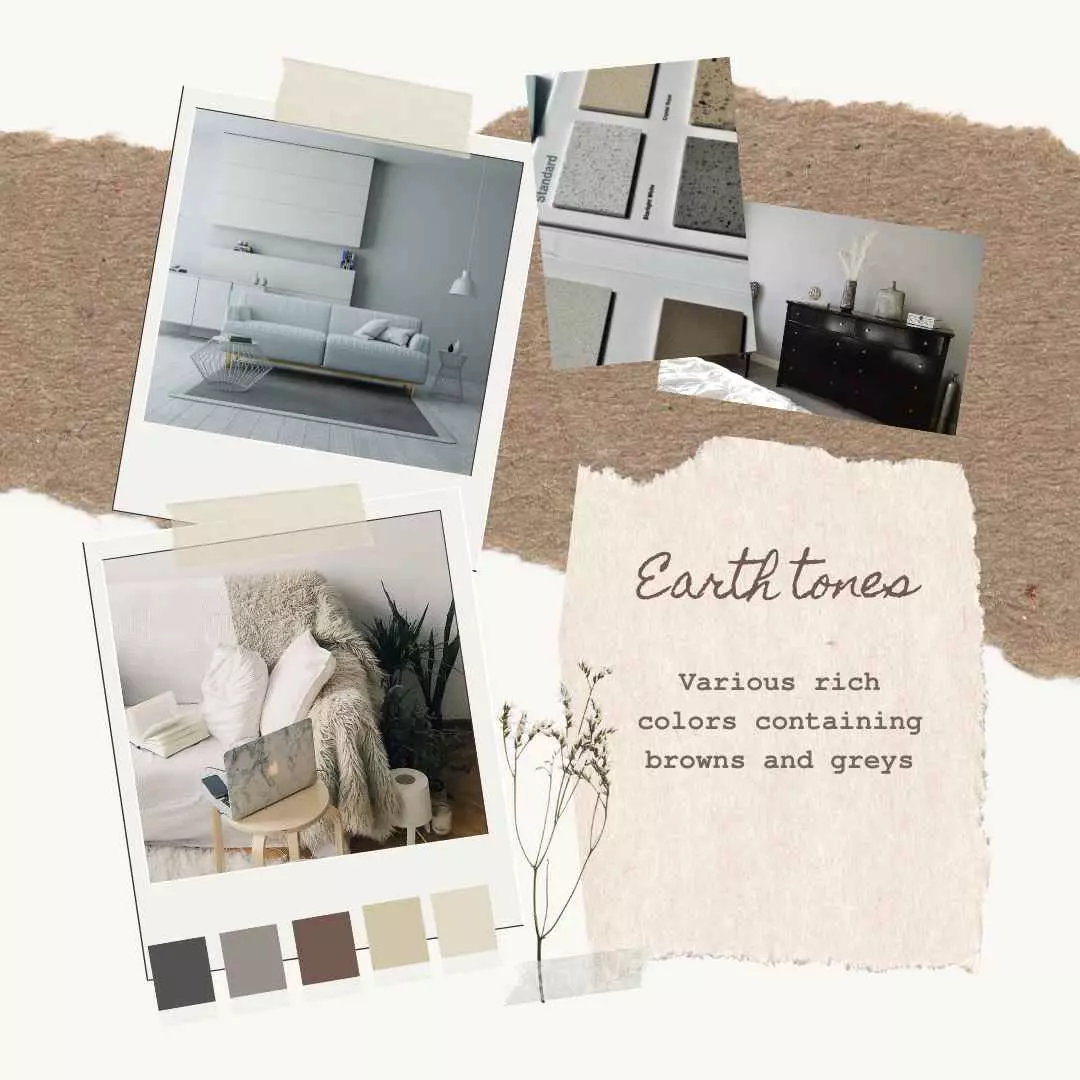 Caption: Explore the possibilities with a brown and grey color palette.
Caption: Explore the possibilities with a brown and grey color palette.
Types of Interior Design Mood Boards
Interior designers utilize various types of mood boards to cater to specific goals and styles. Here are four popular types of mood boards:
Inspiration Boards
Inspiration boards visually represent the designer's inspiration for a specific project. They incorporate materials like fabric swatches, paint samples, photographs, and magazine tear-outs.
Collage Boards
Similar to inspiration boards, collage boards focus on a specific element or theme. They can highlight a particular color scheme or revolve around a specific concept, such as nature or fashion.
Mood Boards
Mood boards capture the overall ambiance and atmosphere that the designer aims to create. With a combination of images, textures, and colors, they become the foundation for your design journey.
Concept Boards
Concept boards convey a specific concept or idea, making them the most specific type of interior design mood boards. They represent a particular theme or vision for a space, guiding the design process accordingly.
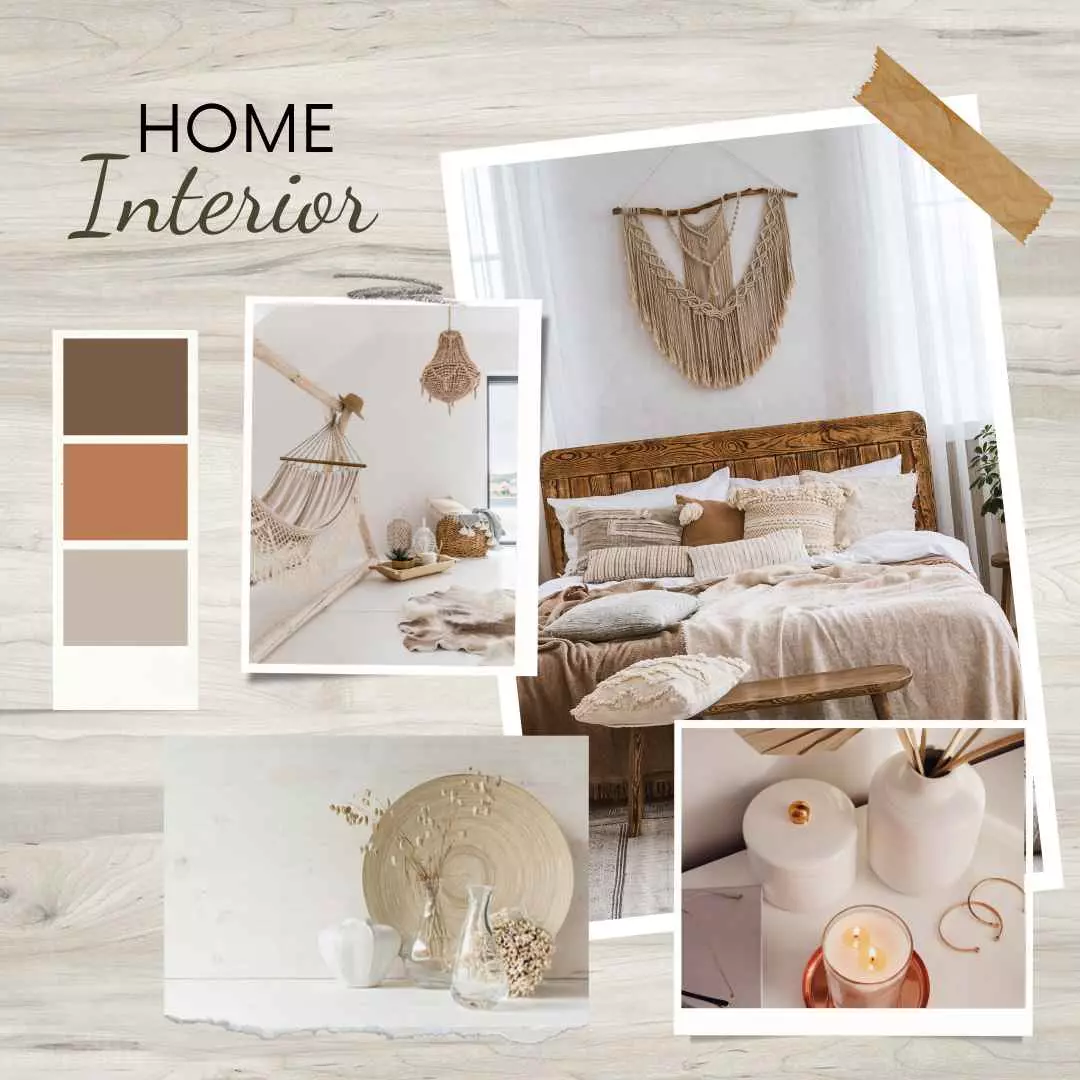 Caption: Discover the perfect textures for your interior design project with a mood board.
Caption: Discover the perfect textures for your interior design project with a mood board.
Unleash Your Interior Design Potential
An interior design mood board is your gateway to creating spaces that reflect your personality and style. While collaborating with an interior designer is a smart move, don't shy away from expressing your ideas and inspirations. Trust in the process, and let your mood board guide you towards a stunning and personalized living space.
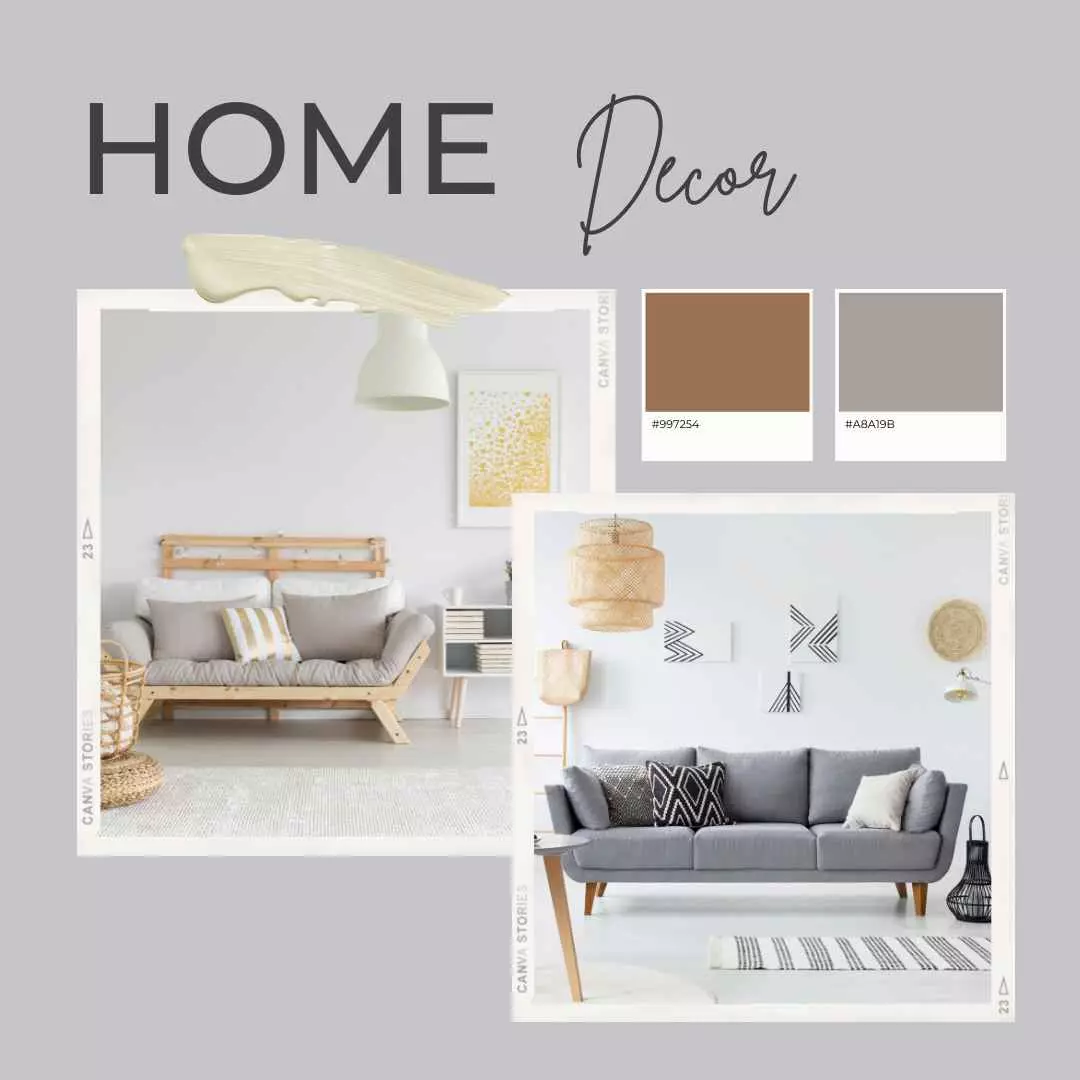 Caption: Elevate your design with a refined and elegant color palette.
Caption: Elevate your design with a refined and elegant color palette.
All image credit goes to Canva.







